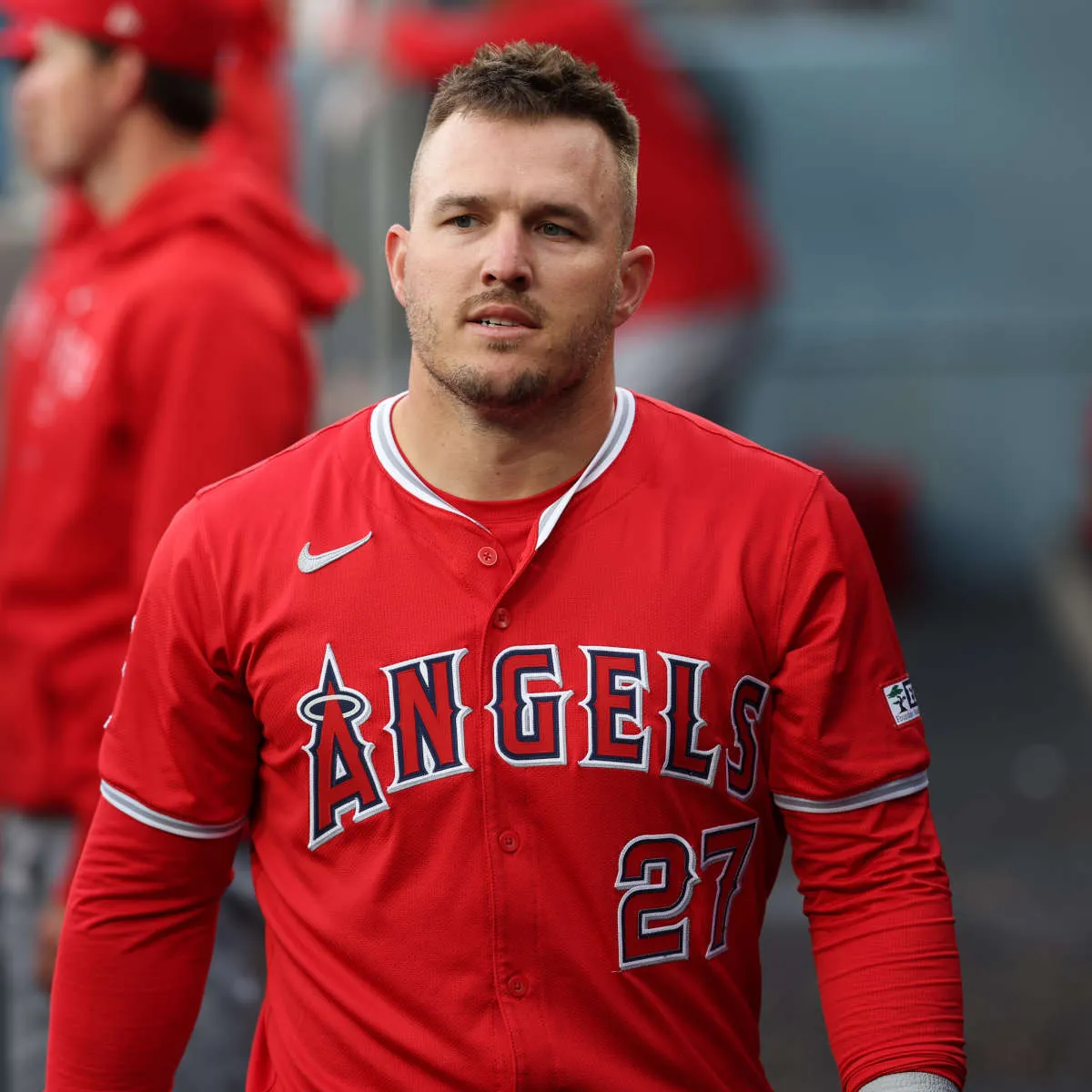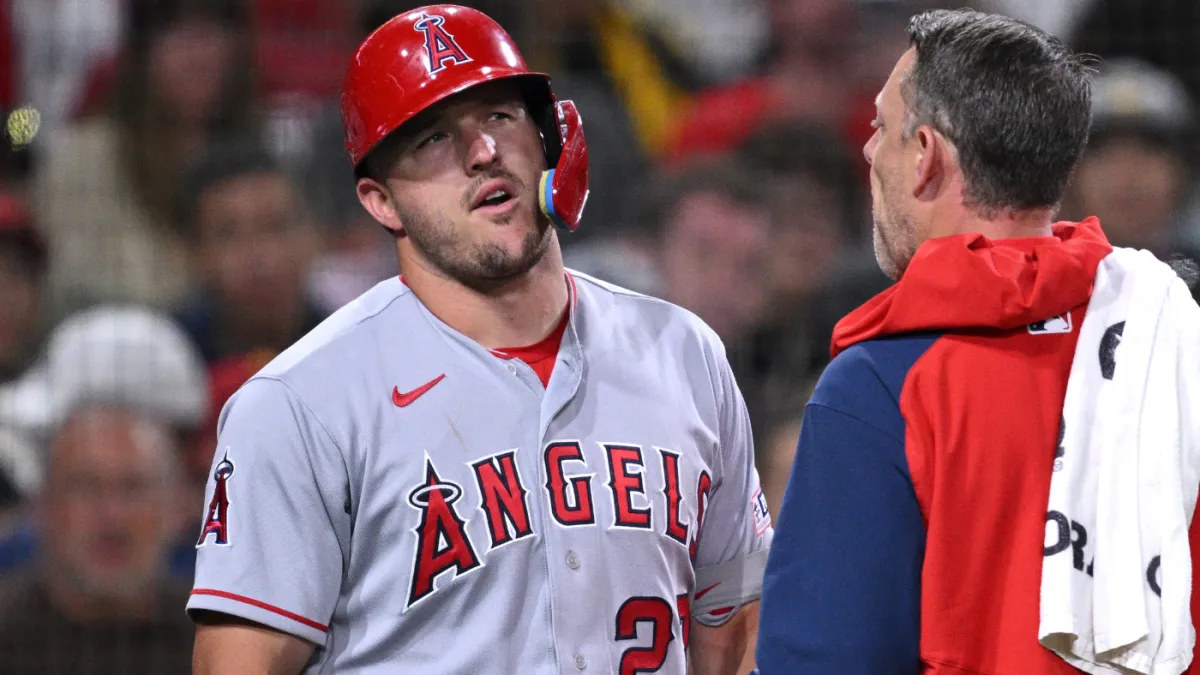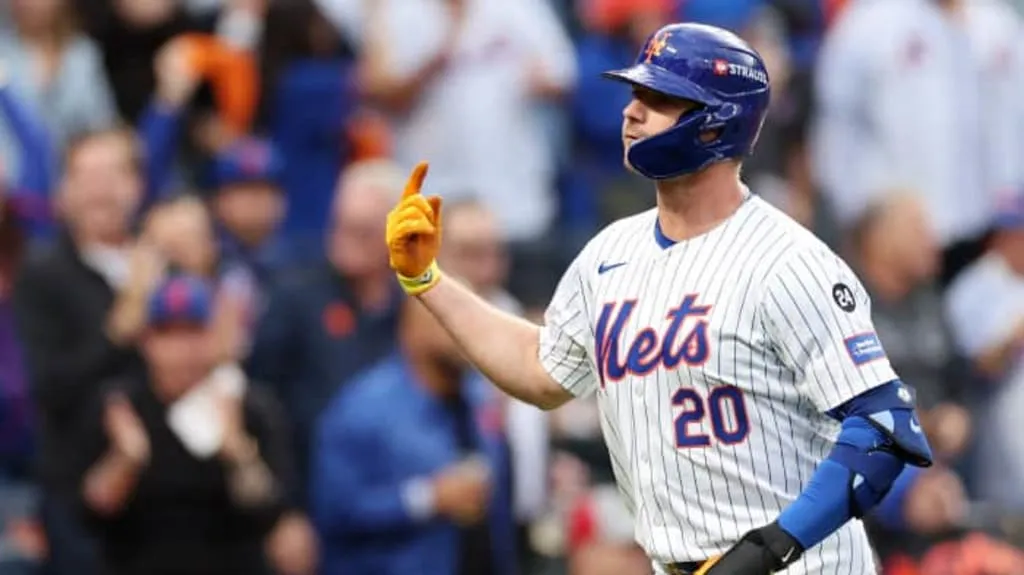

He Ruled the Diamond — Now Mike Trout Is Barely Holding On. What Happened?
For over a decade, Mike Trout was more than just the face of a franchise — he was the beating heart of Major League Baseball. From his jaw-dropping rookie season to his string of MVP-worthy campaigns, Trout seemed destined for baseball immortality. Scouts, analysts, and fans agreed: they were watching a once-in-a-generation talent, a player whose blend of power, speed, and baseball IQ made him a nearly perfect ballplayer. But fast forward to 2025, and the narrative has shifted dramatically. Injuries, diminished performance, and team struggles have cast a long shadow over Trout’s once-legendary status. The question now looms: what exactly happened to Mike Trout, and is there any path back to greatness?

From Unstoppable Force to Uncertain Future
Back in the early 2010s, Mike Trout exploded onto the scene like a supernova. His rookie campaign in 2012 was historic — 30 homers, 49 stolen bases, and Gold Glove-caliber defense in center field. For years, he dominated leaderboards: OPS, WAR, OBP, you name it. He wasn’t just good — he was historically great. Analysts compared him to Mickey Mantle, some even dared to call him better. He was consistent, humble, and fiercely competitive. By 2019, Trout had already amassed three MVP awards, and many believed he was only getting started.
But something changed in the years that followed. Injuries, once a footnote, became a recurring headline. A nagging calf strain here, a back issue there, and then a devastating hamate bone injury that wiped out most of his 2023 season. Trout was no longer a player you could pencil into the lineup every day. In fact, his availability became one of the biggest question marks for the Los Angeles Angels. And when he did play, the numbers — while still above league average — no longer screamed “best player in baseball.”
The Toll of Injuries and Age
It would be a mistake to call Mike Trout’s decline a sudden fall. Rather, it’s been a slow erosion, driven by the merciless toll of time and wear-and-tear injuries. Baseball is a game of repetition and grind — 162 games a year, endless travel, and high-speed impacts that accumulate damage, even on the most elite athletes. Trout’s lower body injuries in particular robbed him of his signature speed, once a key weapon in his game. Statcast metrics show a stark drop in his sprint speed and range in the outfield. Once a Gold Glove defender in center field, Trout has shifted to corner outfield spots more frequently, and defensive metrics have followed suit — trending downward.
Offensively, the decline is subtler, but equally telling. Trout’s strikeout rate has climbed, and while he still hits for power, his contact rate has dipped, and his ability to drive pitches outside the zone has diminished. The swing remains elegant, the eye is still there, but the fear he once inspired in pitchers has faded. Where once he could change a game with a single swing or a daring steal, now he feels like a shell of the juggernaut he once was.
A Franchise in Perpetual Limbo
Of course, baseball is not played in a vacuum, and context matters. Trout’s struggles are magnified by the chronic dysfunction of the Los Angeles Angels, a franchise that, despite having generational talents like Trout and Shohei Ohtani, could never translate star power into postseason success. Year after year, the Angels languished in mediocrity — inconsistent pitching, managerial turnover, and poor roster construction left them chasing shadows in the competitive AL West.
Trout, loyal to a fault, signed a massive 12-year, $426 million extension in 2019 to stay in Anaheim. While admirable, the decision effectively tied his fate to a team that could never build a true contender around him. Now, with Ohtani gone to the Dodgers and Trout battling time and injury, the Angels are once again adrift — and so is their star.
The frustration is visible. In interviews, Trout remains composed, but there’s a noticeable change in tone. Gone is the wide-eyed optimism of youth. In its place is a quieter, more somber realism. He talks about “taking it day by day,” and “doing what I can to stay on the field.” There’s less talk about chasing records, more about recovery, maintenance, and trying to enjoy the game while he still can.
The Harsh Spotlight of Expectations
Part of the challenge Trout faces is the weight of his own legacy. When you’re hailed as the greatest player of your generation, anything short of domination feels like failure. Fans and pundits don’t compare Trout to the average major leaguer — they compare him to Trout at his peak, and to immortals like Willie Mays or Ted Williams. That’s a tough standard to live up to, especially when your body no longer cooperates.
There’s also the burden of not delivering in October. Despite his incredible personal stats, Trout has appeared in exactly one postseason series — a 2014 sweep at the hands of the Royals — and has just one playoff hit to his name. Fair or not, this stat looms large. In baseball’s mythology, greatness is cemented in the crucible of playoff drama. Trout, through no fault of his own, was denied that stage repeatedly.
Now, as he fades from the national spotlight, younger stars have stepped in to fill the void. Mookie Betts, Ronald Acuña Jr., Julio Rodríguez, and Corbin Carroll are the new faces of the game — vibrant, durable, dynamic. Trout, once the future, now feels like part of a fading past. And that’s a hard truth to swallow.
Can There Be a Second Act?
Still, writing off Mike Trout entirely would be a mistake. The game has seen comebacks before. Albert Pujols had a magical late-career resurgence. Justin Verlander reinvented himself after injury and came back to win a Cy Young. If anyone has the drive, work ethic, and baseball intelligence to adapt and persevere, it’s Trout.
The question is what that comeback would look like. He may never again be the 10-WAR monster who dominated every facet of the game. But could he be a veteran slugger, a presence in the middle of the lineup who delivers 25-30 homers and solid on-base numbers while mentoring the next generation? Absolutely. Could he find a new role with a team poised to contend, finally getting the October moments he deserves? Possibly. But the clock is ticking.
 There’s also the mental toll to consider. Years of battling injuries can wear on even the toughest athlete. The rehab grind is lonely and thankless. For someone who loves the game as much as Trout, being physically limited must be heartbreaking. How long will he want to push through that grind? Only he knows.
There’s also the mental toll to consider. Years of battling injuries can wear on even the toughest athlete. The rehab grind is lonely and thankless. For someone who loves the game as much as Trout, being physically limited must be heartbreaking. How long will he want to push through that grind? Only he knows.
Legacy in the Balance
When the story of Mike Trout is written, it will be complicated — brilliant and frustrating in equal measure. On one hand, he redefined excellence during the 2010s, posting one of the most dominant 8-year stretches in baseball history. On the other, his career has been marred by missed time, team irrelevance, and a postseason résumé that reads like a footnote.
But legacy isn’t just about rings or records. It’s about impact, and on that front, Trout’s mark is undeniable. He inspired a generation of young players with his quiet professionalism, his awe-inspiring talent, and his unwavering dedication to the game. He did things on a baseball field that few have ever done, and he did them cleanly, respectfully, and without chasing headlines.
Still, as 2025 unfolds and Trout once again finds himself on the injured list, fans and media alike are left wondering: is this the beginning of the end? Or does the man who once ruled the diamond have one last act left to play?
Only time — and Trout’s battered, determined body — will tell.


















